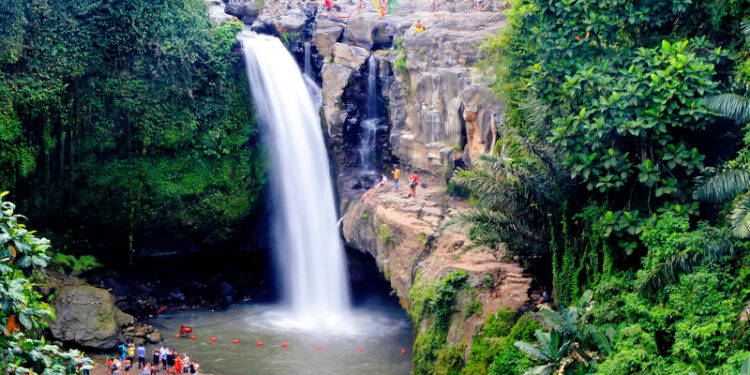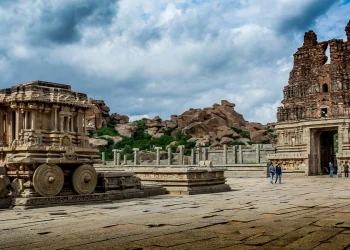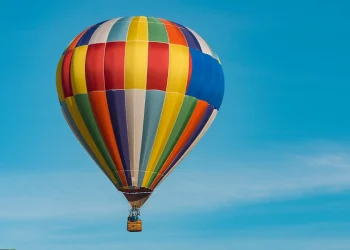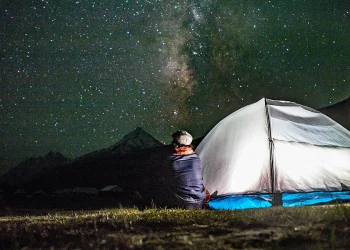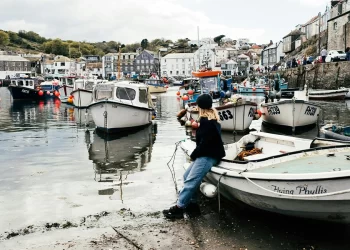Bali – the Island of the Gods – is a world in itself, no matter whichever way you perceive this jewel: cultural, architectural, gastronomical, the list of perspective goes on. It is not surprising that Bali features in everyone’s bucket list. In fact, this little island is more popular than its motherland archipelago, Indonesia, that many travellers mistake it as a country of its own. This tropical island is famed for its ochre beaches, and the coastline around Kuta is revered as a surfing Mecca, a particularly sought after destination by neighbouring Australia.
Of all of Bali’s wonders, what impressed me the most was Ubud – the cultural capital of Bali. Nestled in the heart of the island, Ubud is ensconced by highlands covered with tropical forests and rejuvenated by beautiful waterfalls. It is a welcome change from Bali’s conventional coastline brouhaha, yet has such strong spiritual and cultural foundations that travellers coming to visit Ubud for a few days, end up staying for multiple weeks to sometimes months.

Ubud and Bali in general has strong roots in Hinduism, an export from India. I had read about this, but it was only when I visited this island that I realised its magnitude and cultural significance to the locals. The Kalinga empire had apparently established prosperous trade ties with south east Asia way back in the first century AD. Today, locals in Orissa celebrate the ‘Bali Yatra’ festival in honour of their ancestors who went forth on these seafaring trade adventures. There is mention of Sumatra in the Buddhist Jataka tales while the Ramayana tells of the monkey king Sugriva sending his scouts to Java-dwipa in search of Sita. Trade ties were continued by the Chola Empire, thus resulting in the proliferation of Hinduism and Buddhism in south east Asia for nearly two thousand years.
The Champa kingdom of Vietnam, the Khmer rulers of Cambodia (the makers of Angkor Wat), the Srivijaya and Majapahit empires of Indonesia, among many others, had embraced ideologies exported from India.
In fact, the very name Indonesia translates to ‘Islands of India’ given the strong cultural ties and similarities between these two countries historically. Today, only a few fragments of this rich legacy survive in all of South-east Asia, Bali being the richest living remnant.

Do not, therefore, be surprised if you amble through the streets of Bali, and stumble upon statues of Vishnu on Garuda in every other corner. Or if you find Ghatokacha fighting Karna outside the Denpasar Airport; or if you spot monster dwarpalas, or gatekeepers, guarding the entrance to the many temples of Bali. This is a major awe-striking point for Indian travellers.

At Ubud similarly, while on a walk, I chanced upon the Pura Taman Saraswati – the Saraswati Temple (‘pura’ is Indonesian for temple), popular among locals for its lavish lotus ponds. While I couldn’t enter the temple as I was outside visiting hours, I loved the architecture of the temple, completed in 1952 (in contrast, the most popular sea-facing Uluwatu temple was established way back in the 11th century).
What impressed me was that the Balinese locals have fiercely protected and retained their artistry over hundreds of years, even today. Sculptors, architects, and painters continue their trade with the same meticulousness and eye for beauty as it was perhaps the case, hundreds of years ago.
This became evident as I saw temples under construction with the same styles and patterns as I saw in the more popular temples dating back from many centuries earlier. In our own country, where the cultural arts and dance forms are declining rapidly, there is much to learn from this small island.

Ubud in particular is perhaps more blessed by the benevolence of Saraswati, the goddess of the arts, as it still houses artistic villages dedicated to woodwork, paintings and sculptures which makes for an interesting visit. Row after row of houses in these villages are committed to creating traditional artworks that are exported, providing impetus to sustain these trades.
I continued my walk in this small town when I came across another beautiful edifice – Balai Banjar Ubud Kelod. It was a theatre, with its main attraction being shows for traditional Balinese dances. Having read a lot about this, I picked my tickets for a dance show later that evening.
Totally worth it, the performance was a great introduction to Balinese music and dance. The auditorium glowing with rich golden-yellow lights, was flanked with ornate wall reliefs, with a statue tribute to Saraswati in the centre, guarded by dragons and other apsara like celestial beings.

The music was refreshingly new and was performed live by a gamelan orchestra, the traditional Balinese musical ensemble. The musicians marched in first and tuned their metallophones (xylophone like instruments played by mallets) along with hand played drums called kendhangs.
Then commenced the various dance forms for over an hour, each form as vibrant as the earlier one, all bedecked with visually stunning headdresses, glittering garments and beautifully painted masks (or faces), so very different to anything I had seen before. A Sekar Jagat welcome dance, a Baris war dance, the popular legong dances characterised by intricate finger movements and punctilious facial expressions and fluttering eyes, a solo Jauk dance by a masked demon with sinister long quivering fingers. The climax came in the form of a Barong dance – a depiction of the eternal fight between good and evil.

The Barong is the good guy, a traditional guardian spirit, depicted in this case in the form of a lion (two dancers dressed in an opulent lion costume and an extravagant lion mask) who faces Rangda, the evil spirit, culminating in a grand fight with the latter’s defeat.
This visual treat is a must-see wherever you go to in Bali. In Tagore’s own words, when he visited this island in 1927, Balinese dance is ‘not like the patter of pouring rains, but like the flow of a wavy stream.’ Indeed, the euphonic metallic notes and the fluttering fingers of the dancers will keep you entranced long after the dance is over.

I was so mesmerised by the masks in the dances that the next day, I headed to the Setia Dharma House of Masks and Puppets. With a massive collection of over 1300 masks and 5000 puppets mostly from Indonesia, the museum is a treasure trove of heritage art.
Keep an eye out for Rama, Sita, Ravan and many other characters from the Ramayan and Mahabharat. Barong masks of guardians in the form of elephants, lions and boars will remind you of Miyazaki movies, while an immense collection of marionettes, shadow puppets and water puppets will remind you of the rich art forms from all over south east Asia which are sadly on the wane.
On my way back, I visited the Sacred Monkey Forest Sanctuary, just adjacent to Ubud. Established in the 14th century, perhaps by the Ubud Royal Family, there are three main temples in this complex, dedicated to Ganga, Shiva and even Brahma!
Today it is used as a sanctuary to house over 700 Balinese long tailed macaque monkeys that attract throngs of visitors interested in watching the playful primates. The mission of the sanctuary is conservation of the wild in line with the Hindu philosophical concept of Tri Hata Karna – three relationships to reach spiritual and physical well-being, viz. man’s relationship with himself, the environment and finally, Supreme God.

As I stood in silence under a thick canopy of trees, my mind filtered the inanimate from the living, and the world that remained was as esoteric as it was beautiful. There were hundreds of statues scattered all across the complex, mostly monkeys, but also other marvellous beasts, mythical creatures, and life-sized anthropomorphic warrior animals.
A lion here, a giant monitor lizard there and even a fantastic bridge sculpted in the shape of a long, fanged dragon. Till date, no one knows why this place was built or by whom. As the late afternoon sun streaked in through the thick foliage, my creative mind could not help imagine an old-world esoteric recreation of Kishkindha – the legendary kingdom of the monkeys hidden far away in these forests. You might smile at the imagination here, but then, this was Bali – its charms and wonders have that effect on you, making you an artist, a dreamer, and a thinker of the highest level.

If you love the wilderness, Ubud has beautiful walks in tropical settings, rewarded with gushing waterfalls. The Tegenungan Waterfall is the most popular, but you can go for long hikes and find many other cataracts all by yourself. Then there are the Tegallalang Rice fields – some of the most popular terraced rice fields in Bali – right in Ubud’s backyard.
These step fields, jade green with rice and peppered with palms and coconuts, are worth a visit just for their grandeur and scale, not to mention that these are part of a larger UNESCO world heritage site that celebrates the Balinese Subak system of sustained water management for irrigation.

Art markets, museums, bird parks, endless curio and souvenir shops, water temples, towering and arcane rock-cut architecture that make you feel like a Tomb Raider, natural springs and baths, volcano walks, classy cafes and restaurants, Ubud is an unending compendium, its every page a blend of the past and the present, crafted so aesthetically that days can easily turn to weeks and weeks to months.
If you are an artist, Ubud is sure to fire your senses in some form or the other, as you find a resonance with your ikigai. If not, rest assured, you will return as one.
Ayan Adak is a business consultant by profession and loves travelling, writing and photography in his spare time.


